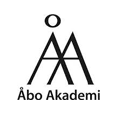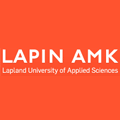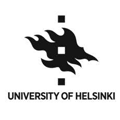Masters Degrees, Graduate Studies and Professional Programs in Finland

Åbo Akademi University
Turku, Finland
Åbo Akademi University is a Swedish language university based in Turku, Finland. Founded in 1918, the school has spread its activities in Vaasa, Jakobstad, Helsinki, and on Åland. The university consists of twelve departments: The faculty area of Arts: Faculty of Arts, Faculty of Education, Faculty of Theology, Department of Psychology and Logopedics; The faculty area of Social Sciences: School of Business and Economics, Department of Social Sciences, Department of Political Science, Department of Law; The faculty area of Natural Sciences: Department of Biosciences, Department of... See full description.

Academy Access
Espoo, Finland
Academy Access Ltd is a school of economics based in Helsinki. It offers various interesting opportunities to students, such as an Exchange Semester in Malaysia, one Year master's degree from the University of the excellent beaches of Australia's dream, and other educational options in Berkeley College in New York, Diablo Valley College, Griffith University Australia, and others.

Arcada Polytechnic
Helsinki, Finland
Arcada is an accredited institution of higher education, specialized in the applied sciences. Located in Helsinki, Finland, Arcada was founded in 1996 with the mission to promote the Finland-Swedish language and culture. It strives to fully meet the needs and requirements of the Finland-Swedish population. Arcada offers 16 degree programs, four of which are in English. The fields of study in which these programs are organized are Social Services, Health Care, Sports, Business Administration, Technology, and Media. On top of that Arcada has made available specialization studies,... See full description.

Degree Programme in IT, School of Technology, Rovaniemi Polytechnic
Rovaniemi, Finland
The degree in Information Technology offered by Rovaniemi Polytechnic (Finland) is part of the Bachelor of Engineering at the School of Technology. The goal of this program is to provide students with knowledge of implementation, structure, and functions of software systems utilized in the software engineering world. Career options such as a software designer, software engineer, ADP designer, System Specialist, Maintenance expert etc are potentially possible for an IT graduate. Rovaniemi Polytechnic (Finland) is part of the Lapland University Consortium.

University of Helsinki
Helsinki, Finland
The University of Helsinki – among the best in the world
The University of Helsinki is one of the best multidisciplinary research universities in the world. The high-quality research carried out by the university creates new knowledge for educating diverse specialists in various fields, and for utilisation in social decision-making and the business sector.
The University of Helsinki is an international academic community of 40,000 students and staff members. It operates on four campuses in Helsinki and at 17 other locations.
Founded in 1640, the University of Helsinki wants to... See full description.
Masters Degrees, Graduate Studies and Professional Programs in Finland by City:
EspooHelsinkiJyväskyläKuopioOuluRovaniemiTurkuVaasaAbout Masters Degrees, Graduate Studies and Professional Programs in Finland
Are you a recent graduate who has always dreamed of studying abroad in a foreign country? Have you considered the beautiful country of Finland as a potential study abroad destination? Studying abroad as a graduate student can be the experience of a lifetime and a great way to gain an alternate cultural and educational perspective. Regardless of your major or field of study, the country of Finland, which is home to some of the world’s finest universities, has everything you need to make your dreams of studying abroad a reality.
Finland, or in official circles, the Republic of Finland, is a Nordic country located in the Fennoscandian region of Northern Europe. The country is bordered by Sweden to the west, Norway to the north, Russia to the east, and Estonia to the south across the Gulf of Finland.
As of 2013 census, Finland had a population of roughly 5.5 million, with the majority concentrated in its southern, warmer regions. In terms of geographic area, the nation is the eighth largest country in Europe and the most sparsely populated country in the European Union. Finland is organized as a parliamentary republic with a central government based in the capital of Helsinki; local governments in 336 municipalities; and one autonomous region, the Åland Islands. Nearly one million residents live in the Greater Helsinki area, a metropolitan bloc consisting of Helsinki, Espoo, Vantaa and Kauniainen, which also produces a third of the country's Gross Domestic Product (GDP). Other large cities in Finland include Tampere, Turku, Oulu, Jyväskylä, Lahti, and Kuopio.
A relative latecomer to industrialization, Finland remained largely agrarian and rural until the dawn of the 1950s. From that point on, the country has rapidly developed an advanced economy while building an extensive Nordic-style welfare state, resulting in widespread prosperity and one of the highest per capita incomes in the world. Today Finland is a top performer in numerous metrics of national performance, including education, economic competitiveness, civil liberties, quality of life, and human development. Finland is also a member of the United Nations, the Council of Europe and the World Trade Organization.
Graduate Programs and Higher Education in Finland
As measured by performance, Finland has one of the finest systems of higher education in the world and is home to several universities that are internationally ranked for their quality and the performance of their students and graduates.
There are essentially two sectors in Finland’s higher education system: traditional universities (yliopisto, universitet) and universities of applied sciences (ammattikorkeakoulu, yrkeshögskola, or AMK/YH for short). The country also has vocational schools for students wishing to enter a trade following graduation.
Admissions to all tertiary institutions are based on a student’s final grade point average from high school, along with his/her score on both the national high school exit examination (abitur), and the university entrance examinations. The selection process is fully transparent, merit-based, and objective; there are no application essays, no human factor in selection, no underrepresented minority support, and no weight placed on extracurricular activities. Moreover, the entrance examinations rarely feature drawn-out multiple-choice exams, but instead consist of a smaller number of longer and more complicated questions aimed at measuring more than just memorization and quick mechanical problem solving.
The main focus of the universities in Finland is research and theoretical education. The universities of applied sciences, on the other hand, focus more on responding to the needs of the world of work and engaging in industry development projects. The nature of research at the universities of applied sciences is more practical and theories are applied to advanced problem solving. For example, the physicians in Finland are graduates of the traditional universities, whereas registered nurses and engineers graduate from universities of applied sciences.
The vocational schools and universities of applied sciences are governed by municipalities, or, in special cases, by private entities. All the traditional universities, on the other hand, are owned by the state. A bachelor's degree takes about three to four years to complete, depending on the program. Completion of the undergraduate program can culminate in graduation and the awarding of a degree, but it is usually only an intermediate step towards the graduate or master's degree. A bachelor's degree earned at a university of applied sciences, on the other hand, takes about 3.5–4.5 years to complete, culminating in the conferment of a Professional Bachelor Degree.
Graduates from traditional universities and universities of applied sciences are able to continue their education by applying to Master's degree programs in the same or related field. After undergraduate degree recipients have completed three year's work experience in their chose field, they are qualified to apply for Master's degree programs in universities of applied sciences, schools which are work and research-oriented . Lower university degree graduates are also qualified to apply, but with additional studies. The Master's degree programs at universities of applied sciences generally span two years in duration and can be undertaken in conjunction with regular work. After the Master's degree, the remaining degrees (Licentiate and Doctor) are available only at traditional universities. All Master's degree holders qualify for graduate studies at the doctoral level.
Some universities also provide professional programs leading to professional degrees. These programs include additional requirements that must be met in addition to merely completing the studies, such as demonstrations of competence in a given practice.
After the Master's degree, there are two further post-graduate degrees—an intermediate postgraduate degree, called Licentiate, and the Doctoral (Doctorate) degree. A Licentiate program has the same amount of theoretical education as a Doctor, but its dissertation work has fewer requirements. On the other hand, the requirements for a doctoral dissertation are a bit higher than that of other countries.
Why Study Abroad in Finland?
Studying abroad in Finland can be the experience of a lifetime. Not only will students have the opportunity to study at some of the world’s best-performing universities, they will also have the chance to soak up the rich culture of the country and meet like-minded people from around the world. When not busy studying in the classroom, Finland offers some of the most interesting and exciting attraction on the globe—places that allow students to explore all the wonderful treats the country has to offer. Some of the more popular sites and attractions in Finland include:
The Fortress of Suomenlinna
That magnificent Fortress of Suomenlinna was built in the second half of the 18th century on a group of islands near the entrance of Helsinki's harbor. This beautifully designed fortress, representing a unique example of European military architecture, was built to help Sweden oppose the ambitions of Russia, whose goal was to reach and conquer the eastern shores of the Baltic Sea. Located on six islands close to Helsinki, the Fortress of Suomenlinna is a famous landmark and one of the largest and strongest sea fortresses in the world. Its history is closely connected with that of Finland and the entire Baltic region.
Old Rauma
Located in the Gulf of Botnia, Rauma is one of the oldest ports in Finland. The town was built around a Franciscan monastery, where visitors can still find a well-preserved mid-15th-century church called "Holy Cross." Old Rauma is the largest and most beautifully constructed wooden town in the world, and a marvelous example of the Nordic’s people passion and creativity. The town includes roughly 600 buildings, most of which are privately owned and kept up beautifully. The vivid business area is concentrated around the market square, and the typical house in the town, known as a kirsti, is decorated as a classic fisherman’s abode. Old Rauma is a place with incomparable architecture and a true living heart that is definitely worth seeing.
St. Olafs Castle
Saint Olafs Castle is located on the picturesque island of Savonlinna, just off the coast of mainland Finland. The northernmost medieval fortress in Europe, the castle is very well preserved by its caretakers. In fact, the city of Savonlinna was founded in 1639 around the castle of St Olaf, and the palace itself, which was built in 1475 by Eric Knight Akselson Toth, is one of the main attractions of the island. Toth built the castle as a way to protect the region of Savona and to control the border between Finland and Russia. Over the centuries, each king who called the castle home contributed to its development and overall design, making it the very eclectic castle we know today. If you happen to visit the castle at the right time, you may even be treated to the popular and now famous Savonlinna Opera Festival, which takes place every year in and around the castle of St. Olafs , an ideal location for celebrating the magic of music and the unique spirit of Finland.
Finland, or in official circles, the Republic of Finland, is a Nordic country located in the Fennoscandian region of Northern Europe. The country is bordered by Sweden to the west, Norway to the north, Russia to the east, and Estonia to the south across the Gulf of Finland.
As of 2013 census, Finland had a population of roughly 5.5 million, with the majority concentrated in its southern, warmer regions. In terms of geographic area, the nation is the eighth largest country in Europe and the most sparsely populated country in the European Union. Finland is organized as a parliamentary republic with a central government based in the capital of Helsinki; local governments in 336 municipalities; and one autonomous region, the Åland Islands. Nearly one million residents live in the Greater Helsinki area, a metropolitan bloc consisting of Helsinki, Espoo, Vantaa and Kauniainen, which also produces a third of the country's Gross Domestic Product (GDP). Other large cities in Finland include Tampere, Turku, Oulu, Jyväskylä, Lahti, and Kuopio.
A relative latecomer to industrialization, Finland remained largely agrarian and rural until the dawn of the 1950s. From that point on, the country has rapidly developed an advanced economy while building an extensive Nordic-style welfare state, resulting in widespread prosperity and one of the highest per capita incomes in the world. Today Finland is a top performer in numerous metrics of national performance, including education, economic competitiveness, civil liberties, quality of life, and human development. Finland is also a member of the United Nations, the Council of Europe and the World Trade Organization.
Graduate Programs and Higher Education in Finland
As measured by performance, Finland has one of the finest systems of higher education in the world and is home to several universities that are internationally ranked for their quality and the performance of their students and graduates.
There are essentially two sectors in Finland’s higher education system: traditional universities (yliopisto, universitet) and universities of applied sciences (ammattikorkeakoulu, yrkeshögskola, or AMK/YH for short). The country also has vocational schools for students wishing to enter a trade following graduation.
Admissions to all tertiary institutions are based on a student’s final grade point average from high school, along with his/her score on both the national high school exit examination (abitur), and the university entrance examinations. The selection process is fully transparent, merit-based, and objective; there are no application essays, no human factor in selection, no underrepresented minority support, and no weight placed on extracurricular activities. Moreover, the entrance examinations rarely feature drawn-out multiple-choice exams, but instead consist of a smaller number of longer and more complicated questions aimed at measuring more than just memorization and quick mechanical problem solving.
The main focus of the universities in Finland is research and theoretical education. The universities of applied sciences, on the other hand, focus more on responding to the needs of the world of work and engaging in industry development projects. The nature of research at the universities of applied sciences is more practical and theories are applied to advanced problem solving. For example, the physicians in Finland are graduates of the traditional universities, whereas registered nurses and engineers graduate from universities of applied sciences.
The vocational schools and universities of applied sciences are governed by municipalities, or, in special cases, by private entities. All the traditional universities, on the other hand, are owned by the state. A bachelor's degree takes about three to four years to complete, depending on the program. Completion of the undergraduate program can culminate in graduation and the awarding of a degree, but it is usually only an intermediate step towards the graduate or master's degree. A bachelor's degree earned at a university of applied sciences, on the other hand, takes about 3.5–4.5 years to complete, culminating in the conferment of a Professional Bachelor Degree.
Graduates from traditional universities and universities of applied sciences are able to continue their education by applying to Master's degree programs in the same or related field. After undergraduate degree recipients have completed three year's work experience in their chose field, they are qualified to apply for Master's degree programs in universities of applied sciences, schools which are work and research-oriented . Lower university degree graduates are also qualified to apply, but with additional studies. The Master's degree programs at universities of applied sciences generally span two years in duration and can be undertaken in conjunction with regular work. After the Master's degree, the remaining degrees (Licentiate and Doctor) are available only at traditional universities. All Master's degree holders qualify for graduate studies at the doctoral level.
Some universities also provide professional programs leading to professional degrees. These programs include additional requirements that must be met in addition to merely completing the studies, such as demonstrations of competence in a given practice.
After the Master's degree, there are two further post-graduate degrees—an intermediate postgraduate degree, called Licentiate, and the Doctoral (Doctorate) degree. A Licentiate program has the same amount of theoretical education as a Doctor, but its dissertation work has fewer requirements. On the other hand, the requirements for a doctoral dissertation are a bit higher than that of other countries.
Why Study Abroad in Finland?
Studying abroad in Finland can be the experience of a lifetime. Not only will students have the opportunity to study at some of the world’s best-performing universities, they will also have the chance to soak up the rich culture of the country and meet like-minded people from around the world. When not busy studying in the classroom, Finland offers some of the most interesting and exciting attraction on the globe—places that allow students to explore all the wonderful treats the country has to offer. Some of the more popular sites and attractions in Finland include:
The Fortress of Suomenlinna
That magnificent Fortress of Suomenlinna was built in the second half of the 18th century on a group of islands near the entrance of Helsinki's harbor. This beautifully designed fortress, representing a unique example of European military architecture, was built to help Sweden oppose the ambitions of Russia, whose goal was to reach and conquer the eastern shores of the Baltic Sea. Located on six islands close to Helsinki, the Fortress of Suomenlinna is a famous landmark and one of the largest and strongest sea fortresses in the world. Its history is closely connected with that of Finland and the entire Baltic region.
Old Rauma
Located in the Gulf of Botnia, Rauma is one of the oldest ports in Finland. The town was built around a Franciscan monastery, where visitors can still find a well-preserved mid-15th-century church called "Holy Cross." Old Rauma is the largest and most beautifully constructed wooden town in the world, and a marvelous example of the Nordic’s people passion and creativity. The town includes roughly 600 buildings, most of which are privately owned and kept up beautifully. The vivid business area is concentrated around the market square, and the typical house in the town, known as a kirsti, is decorated as a classic fisherman’s abode. Old Rauma is a place with incomparable architecture and a true living heart that is definitely worth seeing.
St. Olafs Castle
Saint Olafs Castle is located on the picturesque island of Savonlinna, just off the coast of mainland Finland. The northernmost medieval fortress in Europe, the castle is very well preserved by its caretakers. In fact, the city of Savonlinna was founded in 1639 around the castle of St Olaf, and the palace itself, which was built in 1475 by Eric Knight Akselson Toth, is one of the main attractions of the island. Toth built the castle as a way to protect the region of Savona and to control the border between Finland and Russia. Over the centuries, each king who called the castle home contributed to its development and overall design, making it the very eclectic castle we know today. If you happen to visit the castle at the right time, you may even be treated to the popular and now famous Savonlinna Opera Festival, which takes place every year in and around the castle of St. Olafs , an ideal location for celebrating the magic of music and the unique spirit of Finland.

